Ok, I’ll just say it. Ben and I and the boys have fallen totally in love with our new place. The house is great, but it’s the land itself more than anything, really. We love the way it feels–to walk on it, to work on it, to play on it….to just to be on it. The boys love it for the wide open space it gives them to kick balls, swing sticks, and be just generally loud and wild. Ben and I love it for all the potential it holds for future projects and crafting the life that we want. And we all love tromping around on the land, over streams and through overgrown brush, slowly uncovering many long-hidden places, delighting in our finds both big and small.
One of our most exciting discoveries so far is the apple orchard. We knew before we bought the place that there were a few old apple trees on the property, but it’s been only recently, as we’ve worked our way through seemingly impenetrable walls of thorny, invasive rose vines and overgrown honeysuckle bushes, that we’ve discovered just how many trees there are. We’ve counted over thirty so far, and there are still more areas to search, so it’s likely we’ll find a few more. These are old trees for sure, and they clearly haven’t been pruned or otherwise tended to in a very long time. A few of the trees look vaguely normal, others are absolutely enormous and overgrown, and still others are totally gnarled and growing in very weird shapes. No question, these trees will need a LOT of help in order to revitalize them. Yet, what gives us great hope is this: even in their neglected state, these trees produce a remarkable number of very tasty apples. In the blur of our first days here this past fall, the four of us would tromp around through the dense brush, thrilled to uncover one tree after the next–almost all bearing decent amounts of fruit. The apples were far from perfect of course (there were certainly plenty of worms in the apples), yet they were all surprisingly tasty. If these trees can produce this well after who knows how many years of neglect, how well might they produce with a little love and attention? We have a lot to learn, and a lot of work ahead of us, but we are excited and very hopeful. We have faith in these trees.
In the mean time, we’ve enjoyed the trees and their apples as they are. We picked as many as we could this past fall, ate some fresh, and stored several bags in the cellar. As I had time throughout November and December, I used them to make batches of apple sauce to can. Just yesterday I went down to the basement to get our last bag of apples to make more sauce, but unfortunately the apples had been pretty much demolished by mice. Oh well. Clearly we don’t have our root cellaring scenario in our new place fully worked out yet! At least I got quite a bit of sauce put up earlier……and with any luck, we’ll have a lot more apples for sauce next year.
Apple Sauce
Makes 6-7 quarts
I like to make apple sauce all winter long–it’s a pantry staple in our home, and we go through a lot of it. I prefer my sauce with a touch of cinnamon, and no added sugar, though you can add a bit of sweetener if you prefer. Once you get the apples peeled, the sauce quick and easy to make, and it’s a great way to use up any apples from the root cellar that might have gotten a bit soft, and re-stock supplies of canned sauce if it’s running low. If you don’t have any fresh apples on hand and you prefer to use local ones, try a winter farmers market, if there is one near you. In Maine at least, lots of vendors have local, root-cellared apples available throughout the winter.
To do ahead of time:
*Wash and rinse quart jars, lids, and screw bands. Set screw bands aside until ready to use. Place jars in hot water bath canner, fill at least 2/3 of the way full with water, and bring to a boil. Sterilize jars for 10 minutes, then turn down heat and let jars stand in hot water until ready to use. Place lids in water in a small pan, bring to a low simmer, and hold there until ready to use.
Ingredients:
20 pound of fresh apples
1 tablespoon ground cinnamon
Directions:
1.) Wash, peel, and core apples. Slice the apples into quarters, or smaller pieces, and place in a large pot. Add about 3/4 cup water.
2.) Bring apples to a boil on high, reduce heat slightly. Cook apples, stirring frequently to help apples break down and to prevent sticking, for about twenty minutes, or until apples have turned to mush and the mixture has thickened just slightly.
3.) Add the cinnamon, stir well to incorporate, and the sauce is ready to be canned. If you prefer especially smooth apple sauce, you can run the sauce through a food mill at this point. Then return it to the pot and bring it back to a boil before canning.
4.) Remove hot jars from canner and immediately ladle hot apple sauce into jars, leaving 1/2 inch of headspace. Remove trapped air bubbles and wipe rims with a damp cloth. Carefully put on lids and screw bands, tightening to fingertip-tight.
5.) Place jars in the hot water, ensuring that jars are covered with at least 1-2 inches of water. Place a lid on the canner, return to a rolling boil, and boil for 20 minutes. (Add one minute additional processing time for every 1000 feet above sea level.)
6.) Turn off heat and allow canner and jars to sit untouched for 5 minutes. Then, remove jars from canner, placing them on a cooling rack or dishtowel.
7.) Allow jars to cool undisturbed for 12-24 hours. Then, confirm that jars have sealed. Enjoy your apple sauce! Or, store properly for later use.
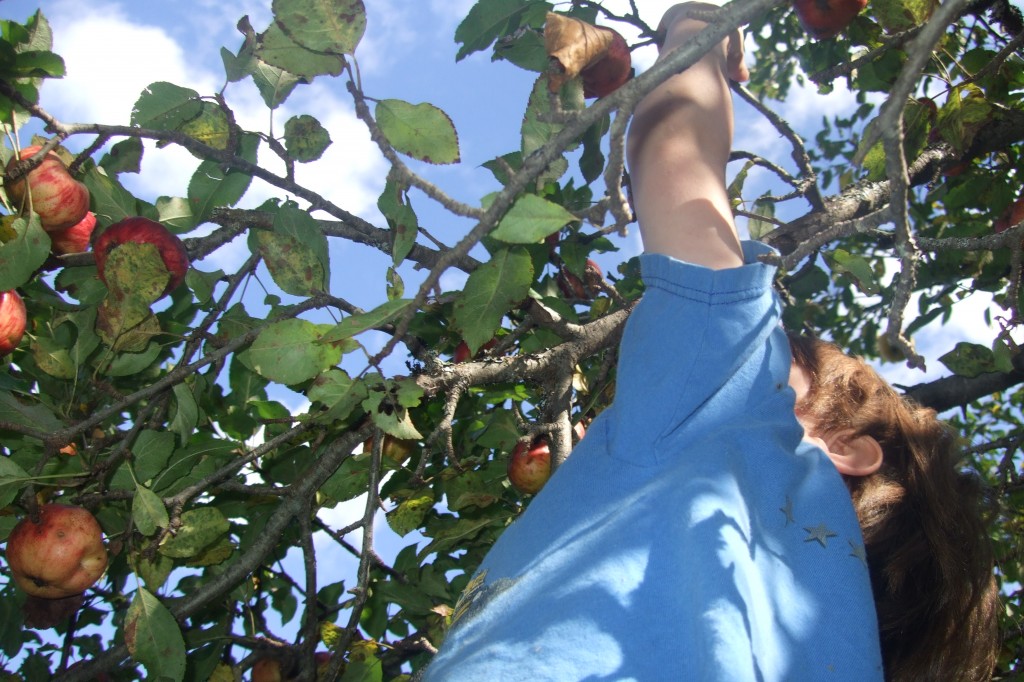
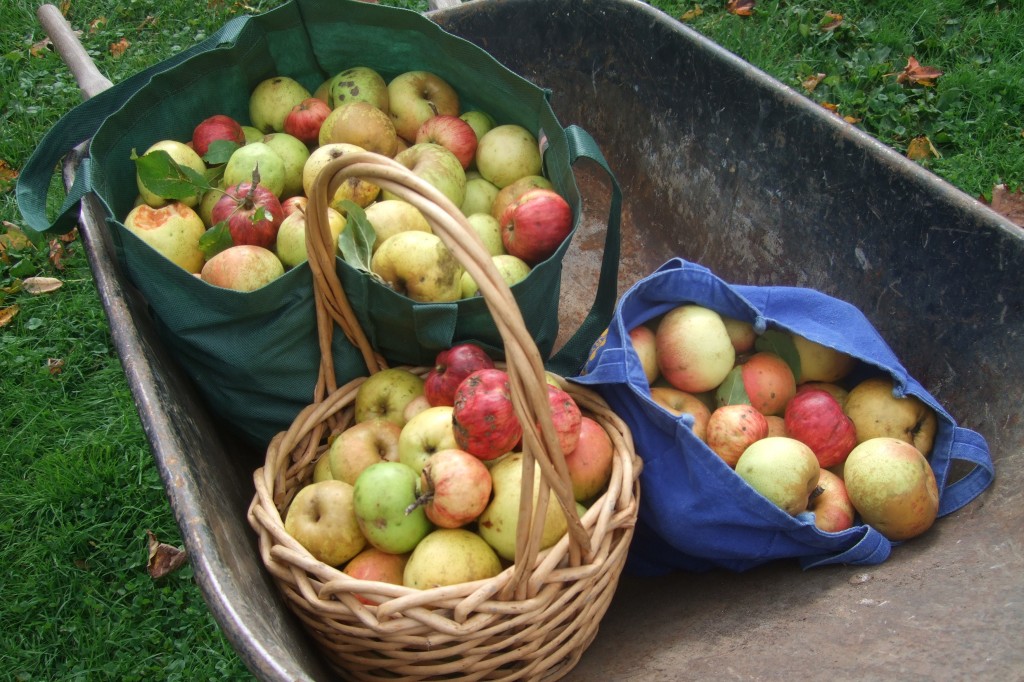
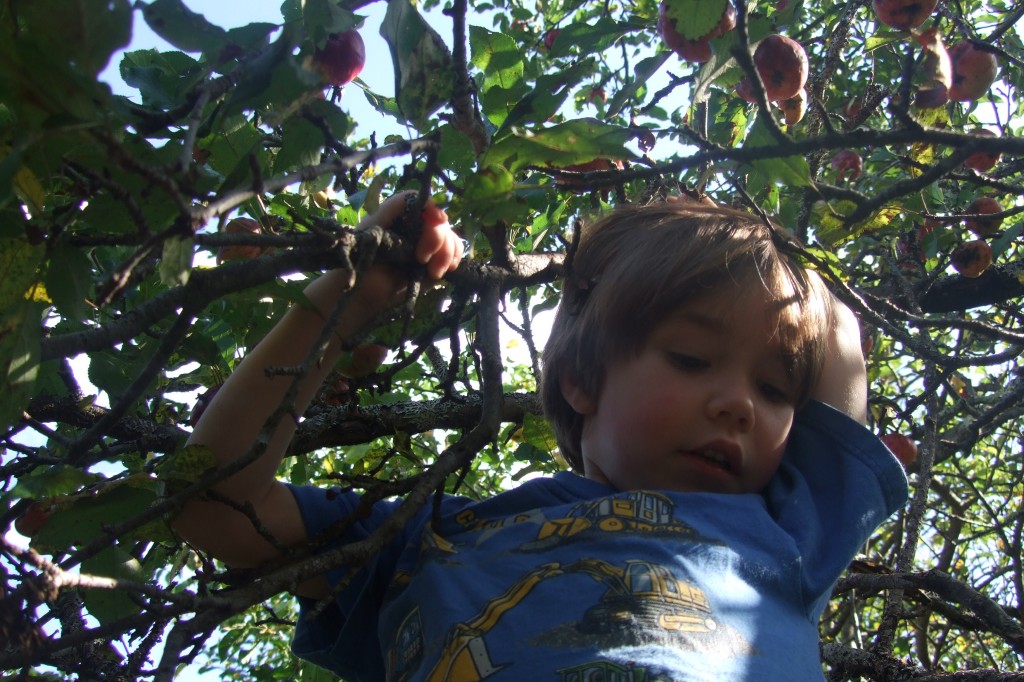
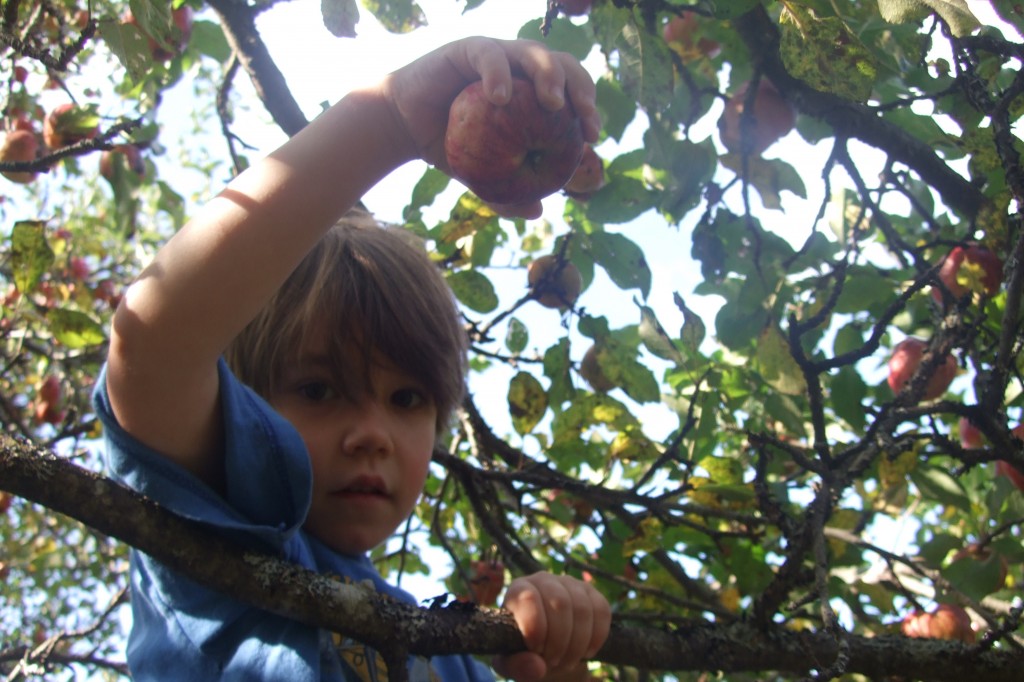
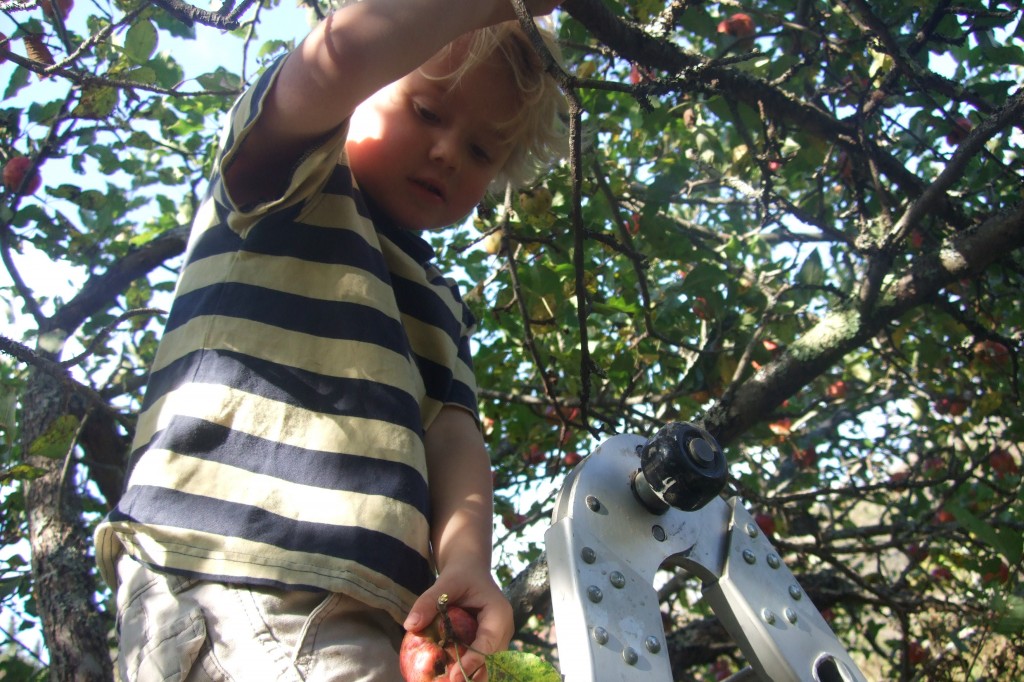
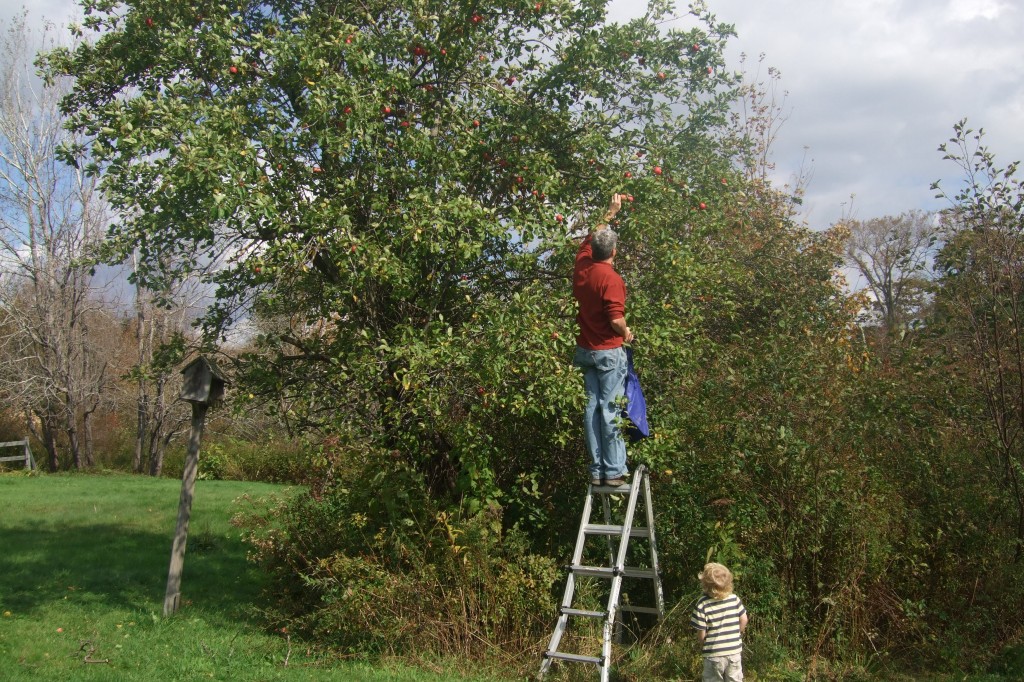
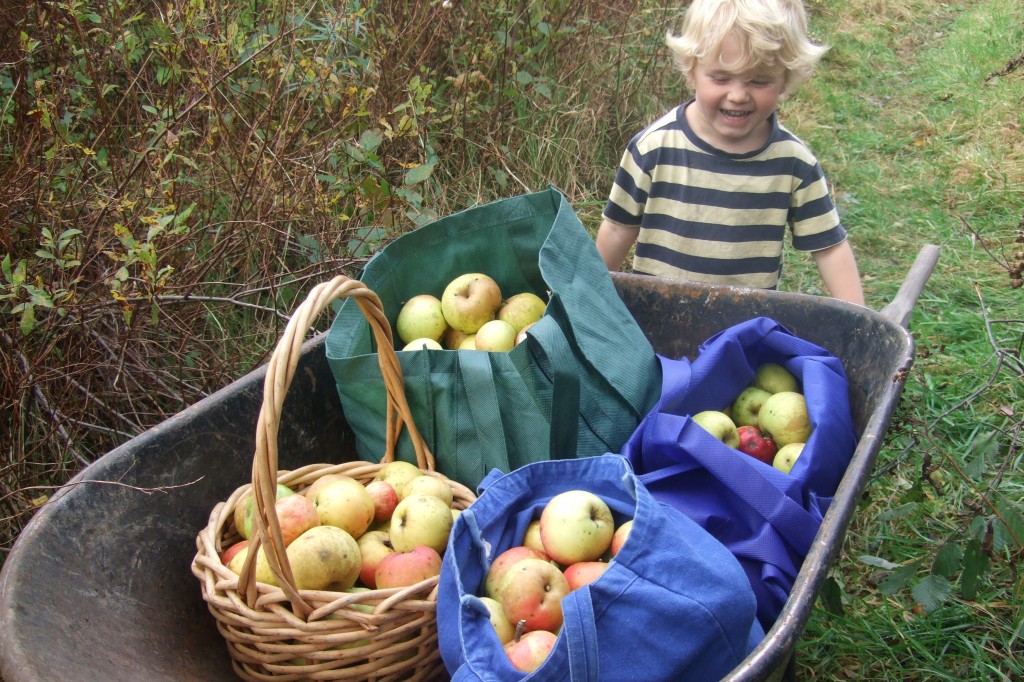
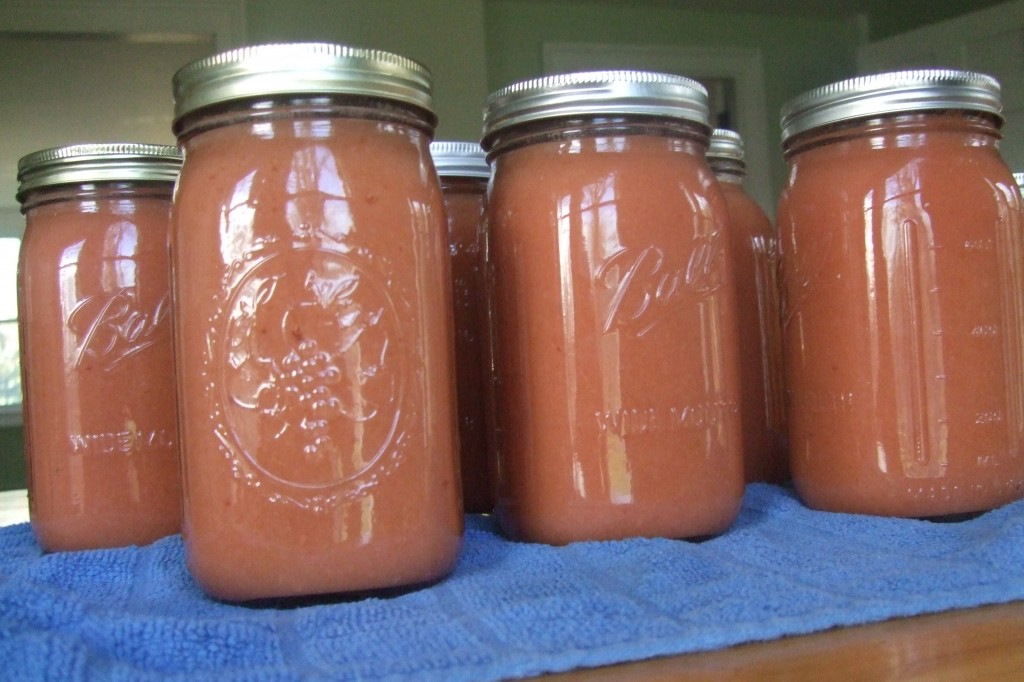

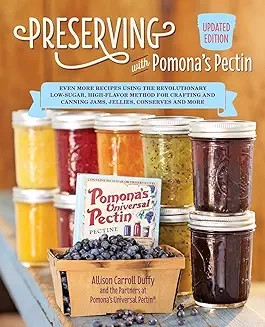

gerard
July 27th, 2014 at 13:24